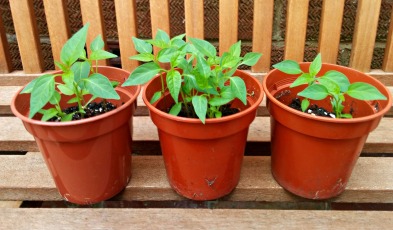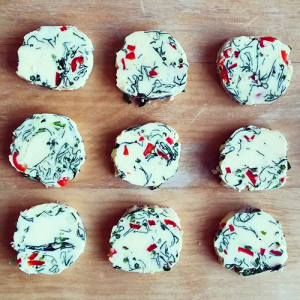You’ve no doubt heard of the capsule wardrobe, but do you know what a capsule kitchen is? At a guess, you might say it involves reducing the amount of equipment you use to cook your meals. Well, it’s certainly not a bad idea to rid your kitchen of any extraneous gadgets (like that grapefruit knife or zester you never use), but Courtney Carver’s capsule kitchen challenge in fact involves choosing 33 types of food to eat in a three month period. Spices and condiments, aka ‘flavour boosters’, aren’t included in the 33 foods and after the three months, you are free to start again with a new list of ingredients.
Pondering this rather different concept, I made a quick list of the foods I typically buy and found I already eat a fairly limited range. This might be because I’m a pescatarian, and also somebody who doesn’t usually consume snack products, like crisps or biscuits at home. Thinking about it, I’m always aware when I go to the supermarket how many aisles I never need to go down, which makes my weekly shop much quicker!

One aim of the capsule kitchen challenge is to see if limiting your food choices offers health and lifestyle benefits. Apart from the obvious fact that choosing 33 ingredients to work with encourages cooking from scratch, rather than relying on processed foods, the capsule kitchen challenge also promotes seasonal eating, as you change your food list every quarter. I’d probably have strawberries on my list in Summer, for example, and exchange these for apples come Autumn.
Like a capsule wardrobe, with a capsule kitchen the ‘less is more’ idea applies. For example, Courtney points out that working with fewer ingredients might allow you to be more creative in the kitchen. During the Breadline Challenge at the end of last year, having a limited amount of food to eat in a week definitely pushed me to use what I had available more ingeniously.
Taking into consideration how and what I usually eat, the capsule kitchen challenge probably isn’t for me. I do, however, like the concept and am sure for many people, following the simple challenge rules could make a real difference to their health. I think the beauty of it is, it promotes sensible, nutritious, homemade eating, without overtly being a ‘diet’ in the traditional sense that involves too many difficult-to-stick-to restrictions.
 As I ended up with more plants than I had space for, I gave a couple away to friends and family. I like the thought of other people enjoying the fruits of my labour, as it were! I’ll let you know how the chillies taste when they’re big enough and ripe enough to eat… hopefully that’ll be soon!
As I ended up with more plants than I had space for, I gave a couple away to friends and family. I like the thought of other people enjoying the fruits of my labour, as it were! I’ll let you know how the chillies taste when they’re big enough and ripe enough to eat… hopefully that’ll be soon!




